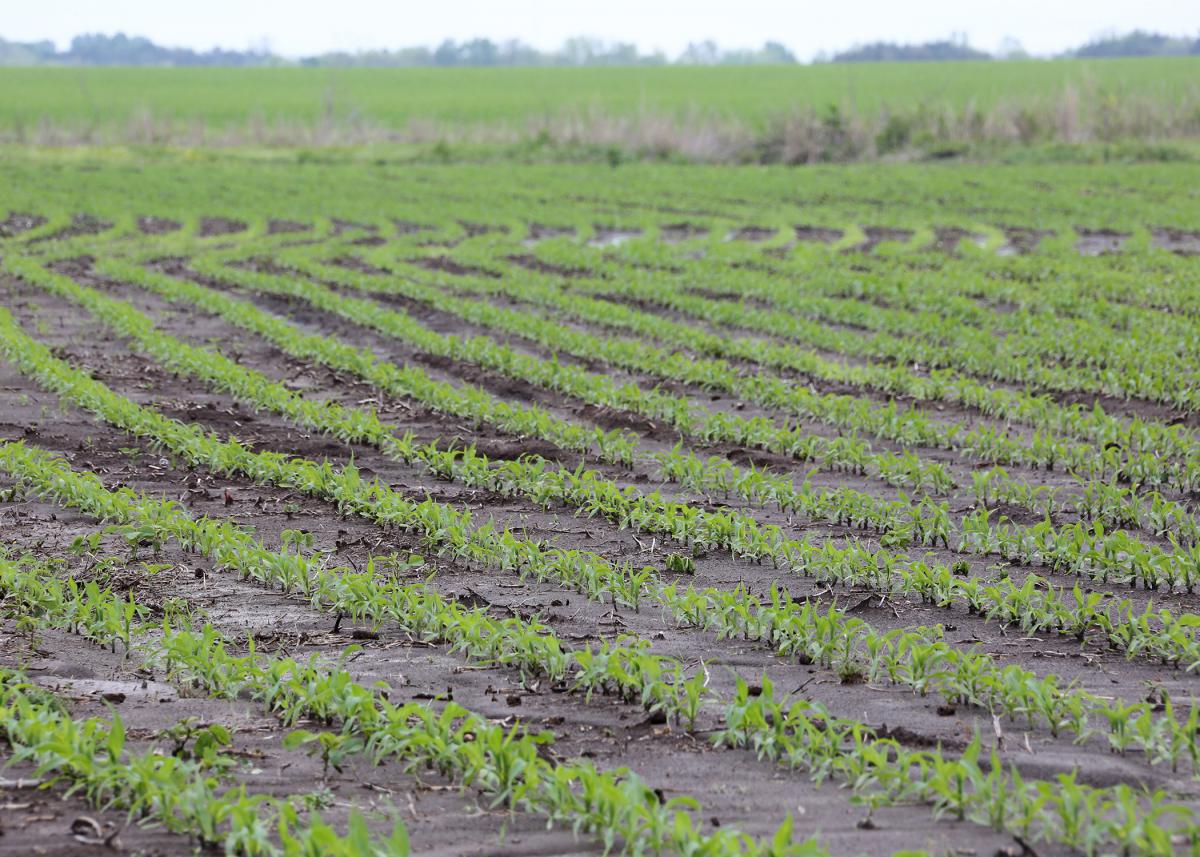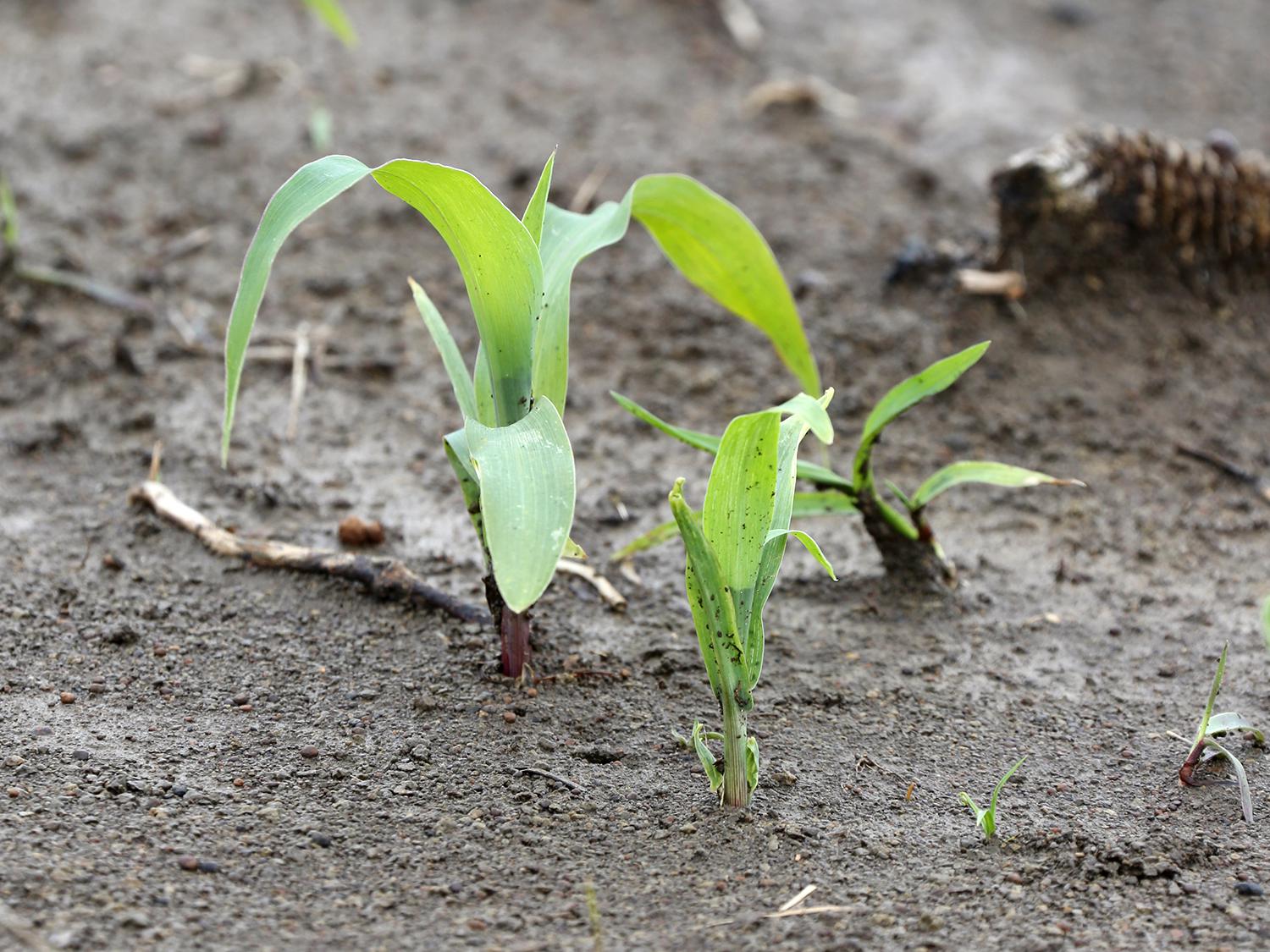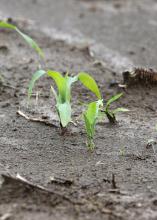Information Possibly Outdated
The information presented on this page was originally released on April 15, 2016. It may not be outdated, but please search our site for more current information. If you plan to quote or reference this information in a publication, please check with the Extension specialist or author before proceeding.
Constantly wet soils hinder corn planting
STARKVILLE, Miss. -- Frequent spring rains and standing water have kept farmers out of their fields, reducing expectations for the state’s corn crop.
Erick Larson, grain crops specialist with the Mississippi State University Extension Service, said growers are struggling to plant the amount of corn they intended. The U.S. Department of Agriculture predicted Mississippi’s corn acreage would be 800,000, up 57 percent from last year’s 510,000 acres.
“We’ve had some big rainfall events, but intermittent rains have kept us out of the field for most of the spring, except for a few brief opportunities,” Larson said. “The first week of April was the best window for planting we’ve had so far this spring.”
 Mississippi corn producers are struggling to plant their fields as frequent, heavy rains have left conditions too wet and muddy to operate on most days this spring. This corn field in Noxubee County, Mississippi, was photographed April 12, 2016. (Photo by MSU Extension Service/Kat Lawrence) - click for high resolution image
Mississippi corn producers are struggling to plant their fields as frequent, heavy rains have left conditions too wet and muddy to operate on most days this spring. This corn field in Noxubee County, Mississippi, was photographed April 12, 2016. (Photo by MSU Extension Service/Kat Lawrence) - click for high resolution imageGrowers planted significant acreage in that short window when soils were dry enough to work. USDA estimated corn was 51 percent planted by April 10, up from just 19 percent the previous week. Both planting rates are behind 2015 and the five-year average.
“The next couple of weeks are going to be critical in terms of having the opportunity to get the corn crop planted,” he said. “For much of the state, the crop insurance window starts closing April 25, and growers who plant after that time start to lose some yield potential.”
Early planting enhances corn productivity, as it allows the crop to reach sensitive pollination and reproductive stages when the weather is more favorable before the extreme heat and humidity of Mississippi’s summer kick in.
Crops cannot be planted when the soil is too muddy for farm machinery to drive across it. Any seed that actually gets planted has difficulty emerging and establishing a good stand if is subjected to days of rain and standing water.
“Several consecutive days of soil saturation can limit oxygen and stunt growth of seedlings, particularly those below ground that have not yet emerged,” Larson said. “These conditions can lead to seedling mortality.”
Preston Aust, Extension agent in Humphreys County, said rain on April 11 likely ended corn planting for the year in his area.
“We’ve probably planted about 60 percent of what was originally planned, but we’re probably done with corn now,” Aust said. “Most of the growers in my area like to plant March corn. There may be a few more acres planted, but most here will opt not to plant more corn even if they get the chance.”
Dennis Reginelli, Extension agent in Noxubee County, said growers in east Mississippi have planted less than half of what they intended because of wet weather, but he expects corn planting to continue.
“Our corn acres are going up this year, and soybeans are losing acres,” he said. “We had some corn planted in mid-March, which is when we normally start up. What has emerged is looking pretty good.”
Reginelli said soggy areas left problem spots in some stands, and frost damaged a few leaves.
“The biggest issue is we’re not getting warm enough temperatures or heat units the corn needs to stimulate growth,” Reginelli said. “We’re having really cool nights, and corn needs a certain number of heat units to grow out of the soil and then to grow the plant.”
Brian Williams, Extension agricultural economist, said Greenville corn was selling for $3.74 a bushel on April 8, down from $3.99 a year ago but up from $3.66 on April 1.
“Demand for corn has improved in the last couple of weeks,” Williams said, noting that feed use predictions are down, but ethanol use estimates are up.
“Probably the two biggest drivers at the moment are the large supplies, with even bigger supplies possible with the increase in acres, and weather,” he said. “In the near term, markets will likely be very responsive to changes in weather conditions as producers are trying to get the corn crop in the ground.”
Williams said grain markets are not favorable for all the Mississippi crops now, but corn has the potential to be profitable.
“If producers can realize good yields this year and manage to get a good price while marketing their crop, there is a potential to turn a decent profit growing corn this year,” he said. “Input prices are down from a year ago, particularly with fertilizer and fuel, which should help on the cost side as well.”




